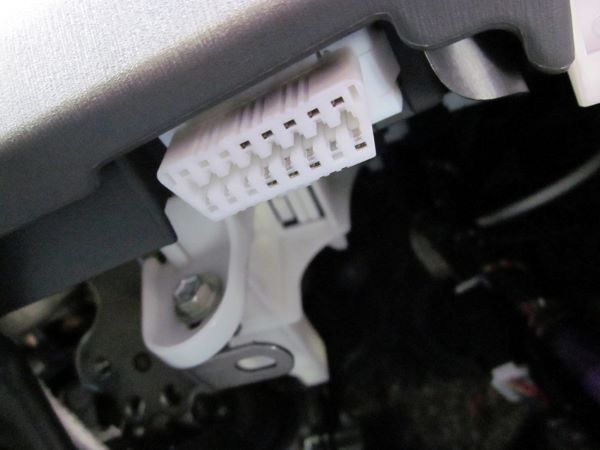
Most telematics installations for car rental still go through the OBD-II port, which was cumbersome if a T-harness was required. New systems forego the OBD-II port entirely, while the future entails connecting to the automotive OEM’s modem.
Photo via Wikimedia Commons/saitobesho.
Auto Rental News sat down with Thomas Brady, chief technology officer and cofounder of RentalMatics, a cloud-based mobility and fleet management platform. ARN asked Brady to discuss how the telematics market is progressing — and will progress — specifically for car rental. In April, RentalMatics announced an integration with TSD Mobility Solutions’ car rental software system.
RentalMatics’ leading solution combined with the TSD operational telematics data from connected fleets will give actionable insights to reduce claims and damage costs while increasing utilization for our partners worldwide.
Auto Rental News: We’ve been following the OEM sourced/installed modem market closely and see a huge opportunity to overcome the biggest issue with telematics and rental, the process of installing/uninstalling the modems. What’s your view of the market? Is RentalMatics looking to integrate with OEM modems?
Thomas Brady: We believe the future of telematics is with direct integration with the OEMs and the onboard telematics unit in the vehicle. This will completely remove the need for device installation and further accelerate the rollout process. However, the industry is still a few years away from having full connectivity with all OEM makes and models. In the interim, a hybrid solution of aftermarket devices and OEM connectivity is required. The RentalMatics platform provides a hybrid solution for connecting both aftermarket devices and OEMs to ensure 100% fleet connectivity.
The device installation time was one of the biggest barriers to entry for our rental clients. This is why RentalMatics has streamlined the installation process and minimized the vehicle downtime necessary to roll out a telematics solution. Typical OBDII units can take 10 to 15 minutes on average to install as they often require a T-harness due to the inaccessibility of the OBD ports. The RentalMatics on-battery device takes less than a minute to install and can be self-installed by check-in agents and cleaning staff with very little training required. This minimizes the operational impact on our clients and has accelerated the adoption of telematics across car rental fleets.
ARN: The RentalMatics offering is a typical aftermarket modem install into the rental vehicle, but the new play is the integration with the TSP system (RentalMatics) directly into the car rental system (TSD)? Having to manage separate telematics software is an operational pain!
TB: I agree, the tight integration between the telematics system and the rental system is essential to maximize the value of telematics. Traditionally, rental fleet operators would have to manage their day-to-day operations on the rental system and then log into a separate system to view their telematics data. However, RentalMatics is completely integrated into the rental system so you can view your telematics data without having to leave the rental system. This is key for counter staff who are dealing with customers and need quick access to the data. For back-office staff, we provide access to our web platform if they need to deep dive into the telematics and rental data insights.
ARN: Most of our work with telematics is on the commercial, corporate, government, and trucking fleet sides. The value there is clear and growing. Rental, however, has unique needs, and more basic ones to start — vehicle location, odometer, fuel. Rental operators need understand other telematics benefits, specifically logistics of vehicle movement and management. How does your product offering address those needs at the right price point? Other telematics service providers (TSPs) have struggled in this market, offering bells and whistles that are not needed or are too expensive for a rental fleet.
TB: RentalMatics provides three different packages at three different price points so we can cater to all our client’s needs. The RentalMatics platform was built by people from the car rental industry for people in the car rental industry. The company is made up of experts from the rental and mobility industries as well as engineers with a background in telematics, cloud computing, and analytics. We are in a unique position to have deep knowledge of the issues faced by the industry while also knowing how to solve them by leveraging telematics and data.
The three-tier model allows our customers to start with our back-office product to reduce operations and insurance costs to see the benefits and value of the platform. Once the value has been proven at this level then they can transition to our higher-level services that are more focused on increasing revenue and improving the renter’s experience. These include our product for corporate fleets, our mobile delivery product (“Deliveroo for car rental”), and our app-based touchless car rental product.
We also provide business and technical support at each stage of the client’s connected car journey. This includes initial staff training, project management, change management, and the digitization of the business rental operations. The customer success team has been very effective at ensuring that our clients achieve their business KPIs and return on investment.
ARN: We ripped up the playbook during the pandemic. Do you think rental will finally be able to realize the benefits of telematics, where they haven’t before?
TB: The accelerated pace of digital adoption during the pandemic has activated the rental industry’s interest in telematics. In response to the pandemic, rental operators are now looking for technology to leverage their data to increase automation and reduce operational costs. They are also adopting the methods to employ touchless operations for the customers whenever possible. The RentalMatics platform provides features to deliver these benefits. The pandemic has dragged the future into the present and RentalMatics can facilitate this acceleration towards the digitization of car rental. Companies that are the first movers in this connected car space will thrive in this new era of mobility.
